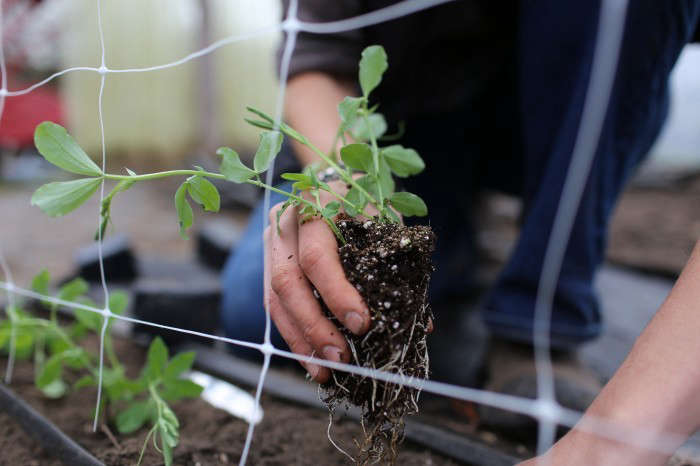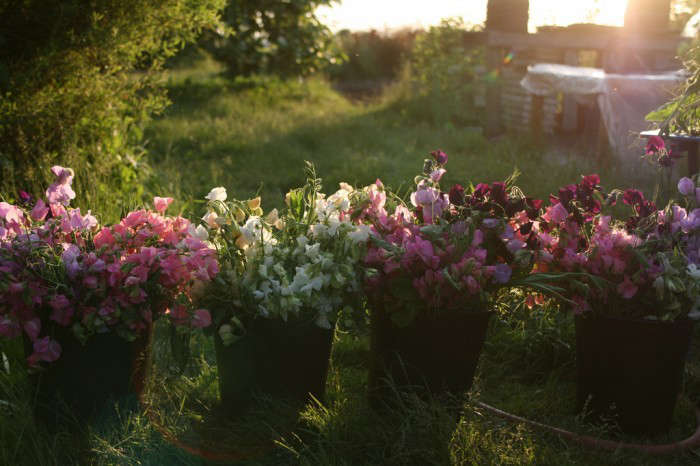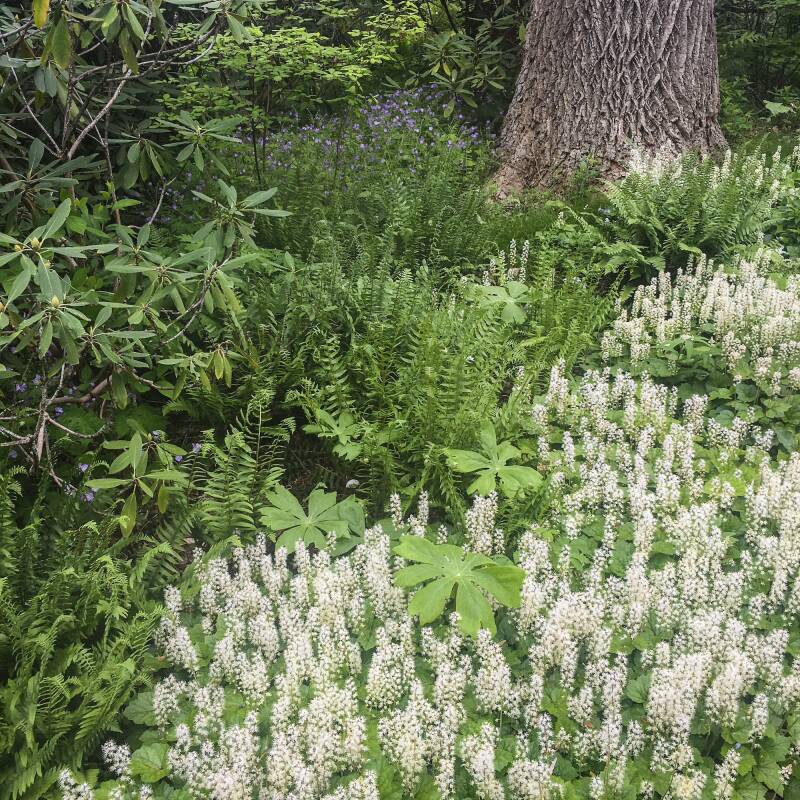Cut flowers are the holy grail. No matter how small your garden, you should be able to grow enough to snip a bouquet’s worth every week without creating sad bald patches. The secret? Plan ahead–and plant ahead–with tips from Seattle-based Erin Benzakein of Floret Flower Farm, who grows more than 260 varieties of flowers.
“You don’t need a ton of space. Just a little spot,” she says. “If you pick the right varieties, and get your spot ready, you can do it.” Here’s how:
Photography via Floret Flower Farm.

1. Germinate seeds indoors. Plant seeds indoors a month before the last frost date. “You’ll need supplemental light because a windowsill may not be sunny enough; if your seedlings are weak and leggy, they’ll get squished in the summer after you set them out in the garden,” says Erin.
To germinate seeds, she places trays on top of the refrigerator (where it’s warm) and then she transfers the seedlings to a tabletop, to sit about 3 or 4 inches below fluorescent grow lights. (See more of Erin’s tips for germinating seeds indoors in Your First Garden: What You Need to Know Before You Grow Plants from Seeds.) A Compact Tabletop SunLite Garden with full-spectrum light bulbs is $189 from Gardener’s Supply Company. A Heat Mat to keep seedlings at a temperature of 70 degrees is $39.95 from Gardener’s.

2. Choose flowers that are easy to grow and produce a lot of blooms. “There are certain work horse plants. The very easiest are zinnias and dahlias and cosmos,” says Erin. “You can expect from 15 to 30 flowers from a zinnia. You can get bunches and bunches of flowers off one cosmos plant.”
Erin Benzakein’s favorite seed sources:
- Long-stemmed Zinnia “Blue Point” in shades of pink, white, yellow, red, and orange is $2.79 from Renee’s Garden.
- With a mixture of pink, red, and white flowers, a Cosmos Versailles Mix (developed especially for cutting) is $4.10 per packet from Johnny’s Seeds.
- A Grower’s Choice Selection of seven types of sweet pea seeds is $34.65 from Enchanting Sweetpeas.

3. When it’s time to transplant seedlings, improve your soil–before you plant. “Not doing it is the biggest mistake you can make,” Erin says. “I’ve tried to cheat so many times, but I always come back to this: you have to feed the soil.”
Let’s say you’re going to plant a clump of flowers in a tiny, sunny spot of soil that sits between two shrubs. “Dump a big bucket of compost on the area, then use a fork or shovel to dig it in to a depth of 6 inches, because that’s where the feeder roots will be,” she says. “Then spread a thick layer of organic fertilizer on top–and dig that in. Then, before you plant, top dress the soil with another sprinkling of compost. It makes all the difference.”

4. Interplant flowers among the other plants in your garden. “All you need to have cutting flowers for two months this year if you plant five cosmos, five zinnias, five sunflowers, and a handful of dahlias,” says Erin. “Tuck flowers inside of already existing beds or shrubbery if there’s an open spot that gets good sun.”

5. Make sure your flowers get enough water. Plant roots need deep drenching; Erin uses a drip irrigation system from Dripworks; for home gardeners, she recommends soaker hoses. “They use about one quarter as much water as overhead watering,” she says. A 25-foot Snip and Drip Soaker Hose is $14.95 from Gardener’s Supply Company.

6. Protect tender seedlings from wind. “Where we garden is a wide open field, and we actually lost one of our greenhouses to wind,” says Erin. “It just ripped the plastic off and it went down the field.”
Home gardeners can protect plants from wind by planting them against a fence or tucking them into sunny spots next to tall, strong shrubs.

7. Keep deadheading. “You’ll get a lot more flowers if you deadhead through the whole season,” says Erin. “Once you let them go to seed, the plants tend to put all their energy into that instead.”

N.B.: This post has been updated with new prices and links; it was first published April 2016.
For more, see:
- DIY: Sarah Raven’s Cut Flower Bouquet
- 10 Tips for Growing Cutting Flowers from Barberry Hill Farm
- Gardening 101: How to Deadhead Flowers












Have a Question or Comment About This Post?
Join the conversation (7)